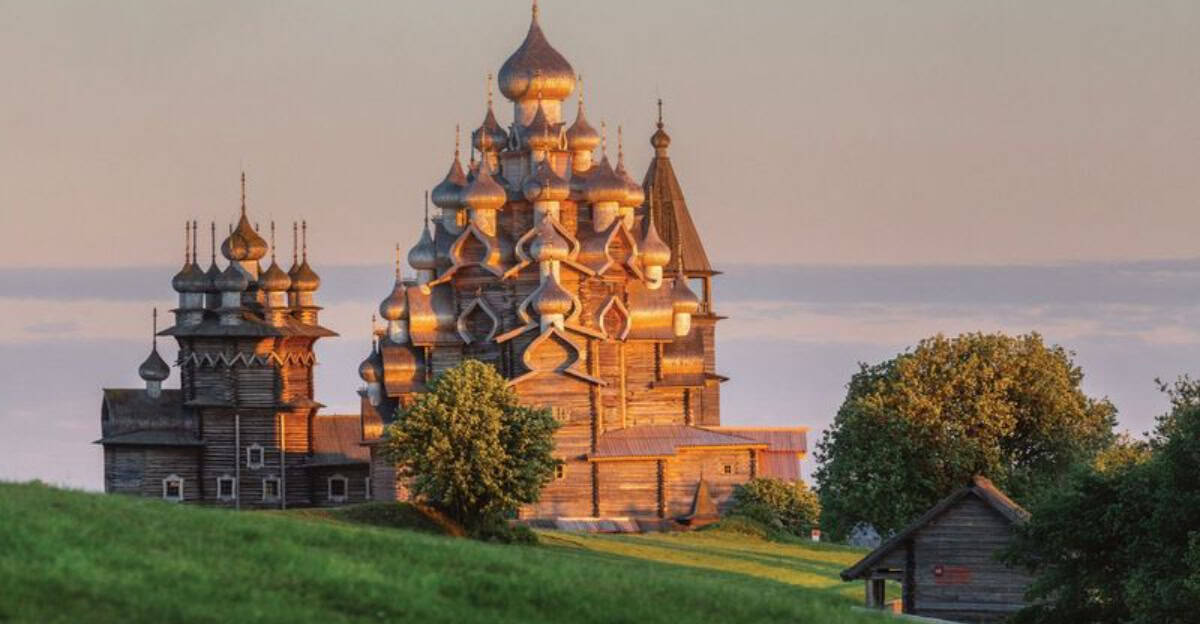Around the world, wooden structures have been admired for their architectural beauty and cultural significance.
From ancient temples to modern marvels, these structures showcase the versatility and elegance of wood as a building material.
Embark on a journey to explore 9 of the most impressive wooden structures that stand as testaments to human ingenuity and craftsmanship.
1. Horyu-ji Temple, Japan
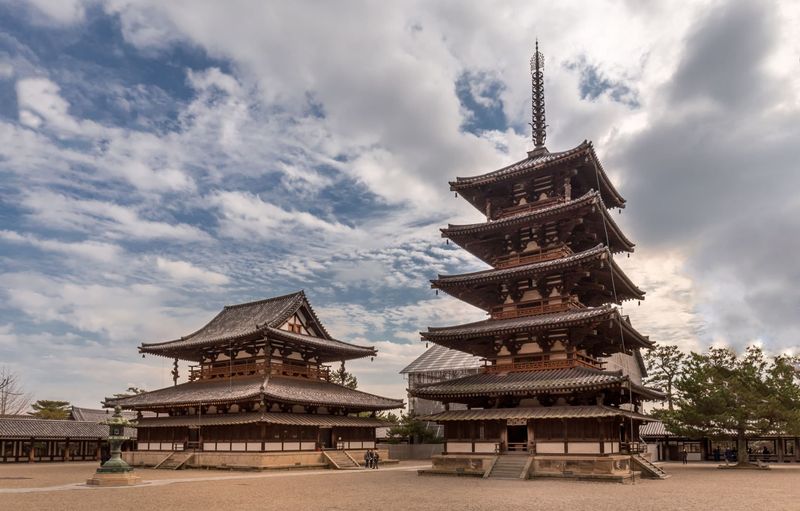
Nestled in Nara, Japan, the Horyu-ji Temple is an architectural gem dating back to 607 AD.
This ancient wooden temple is a UNESCO World Heritage Site, showcasing Japan’s rich cultural heritage. The temple complex houses some of the oldest surviving wooden buildings in the world, reflecting the ingenuity of ancient builders.
Visitors can marvel at the intricate wooden carvings and the pagoda’s elegant structure, which stands as a testament to traditional Japanese craftsmanship.
The serene surroundings enhance the temple’s beauty, making it a destination for those seeking peace and historical insight.
2. Stave Churches, Norway
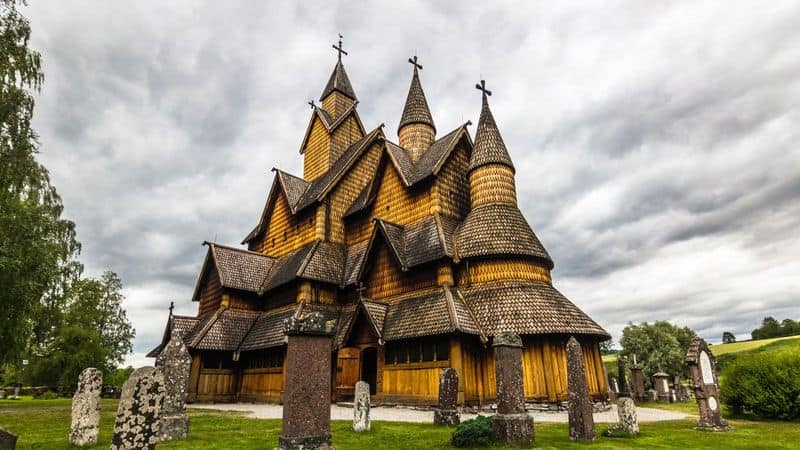
Norway’s Stave Churches are unique wooden structures that date back to the Middle Ages. These churches, characterized by their vertical wooden boards or ‘staves,’ combine Christian and Norse Viking elements.
The intricate carvings and dragon motifs on the church exteriors provide a glimpse into the past, evoking a sense of mystery and history. Their preserved state offers insight into medieval Scandinavian architecture.
Nestled in picturesque landscapes, the stave churches invite exploration, allowing visitors to experience the harmony between nature and architectural beauty.
3. Chengyang Bridge, China
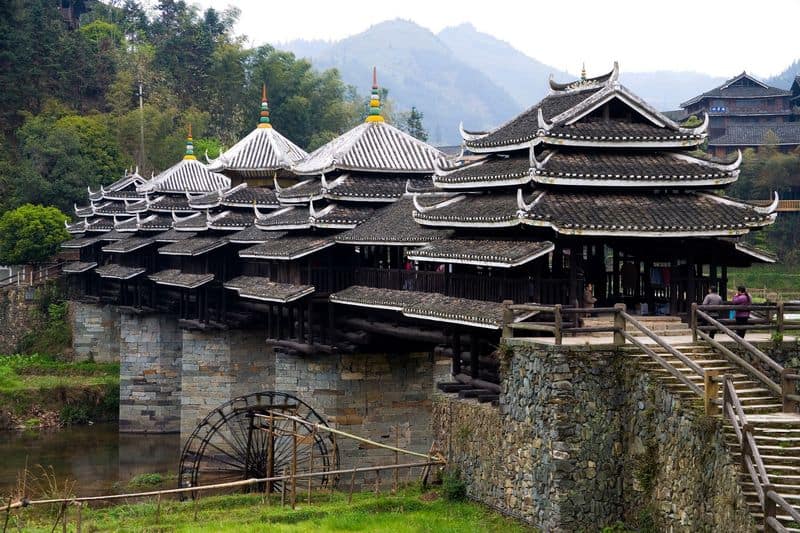
The Chengyang Bridge, also known as the Wind and Rain Bridge, is an exquisite wooden structure in Sanjiang County, China. Built in 1916, it serves as both a bridge and a shelter.
The bridge’s unique design, without nails or rivets, showcases the exceptional craftsmanship of the Dong ethnic group. Its multi-tiered roofs and wooden pavilions offer a picturesque view of the surrounding river and countryside.
This architectural marvel symbolizes harmony and unity, offering a peaceful retreat for those crossing its path, regardless of the weather.
4. Kizhi Pogost, Russia
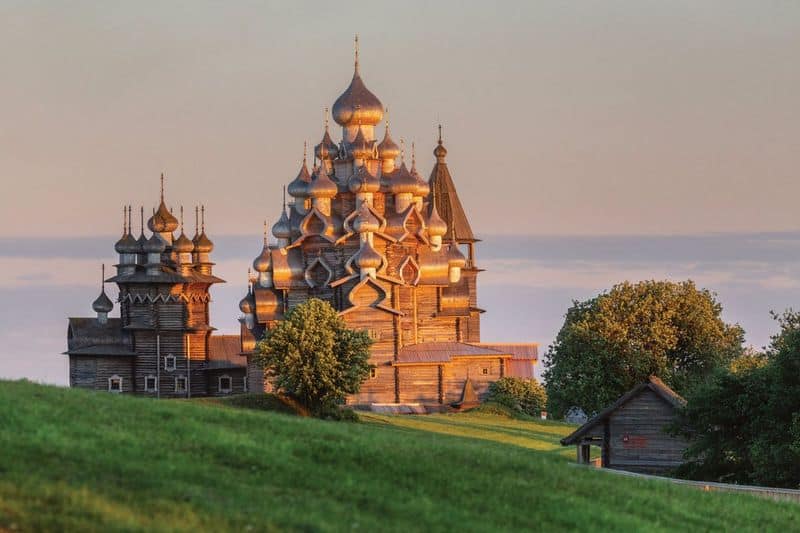
Kizhi Pogost is a historic wooden church complex located on Kizhi Island in Russia. Built in the 18th century, the complex includes the Transfiguration Church with 22 domes and the Intercession Church.
The structures are crafted entirely from wood, without the use of nails, showcasing traditional Russian carpentry. The churches’ intricate designs and the natural beauty of their setting make them a UNESCO World Heritage Site.
Visitors are drawn to Kizhi Pogost for its serene atmosphere and the awe-inspiring artistry of its wooden architecture.
5. The Great Buddha Hall, Japan
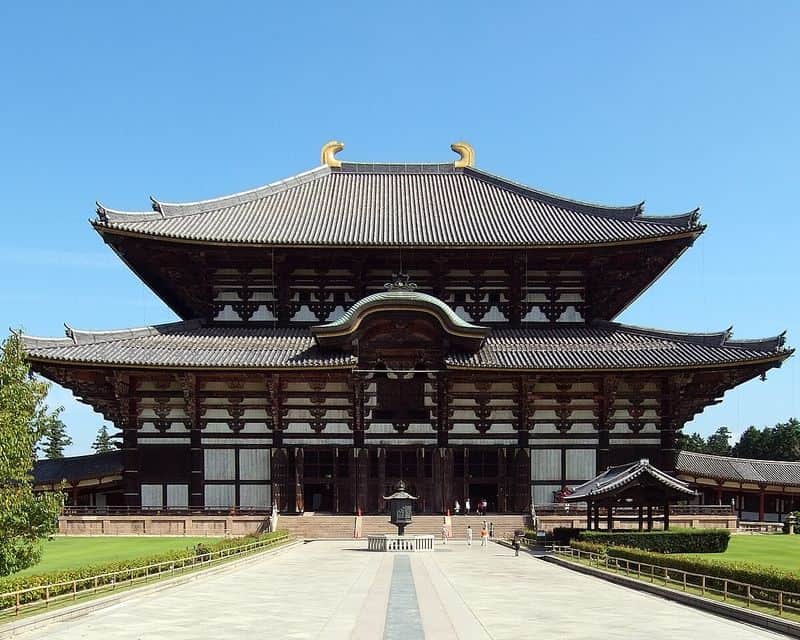
The Great Buddha Hall in Todai-ji Temple, Nara, is one of the world’s largest wooden buildings. Originally constructed in 752 AD, the hall houses a massive bronze Buddha statue.
The impressive scale of the structure, coupled with its rich history, attracts visitors from all over the globe. The hall’s wooden architecture is a masterpiece of ancient engineering, illustrating the grandeur of Japanese religious edifices.
The serene gardens surrounding the hall add to the contemplative experience, offering a spiritual sanctuary for visitors.
6. Gassho-Zukuri Farmhouses, Japan
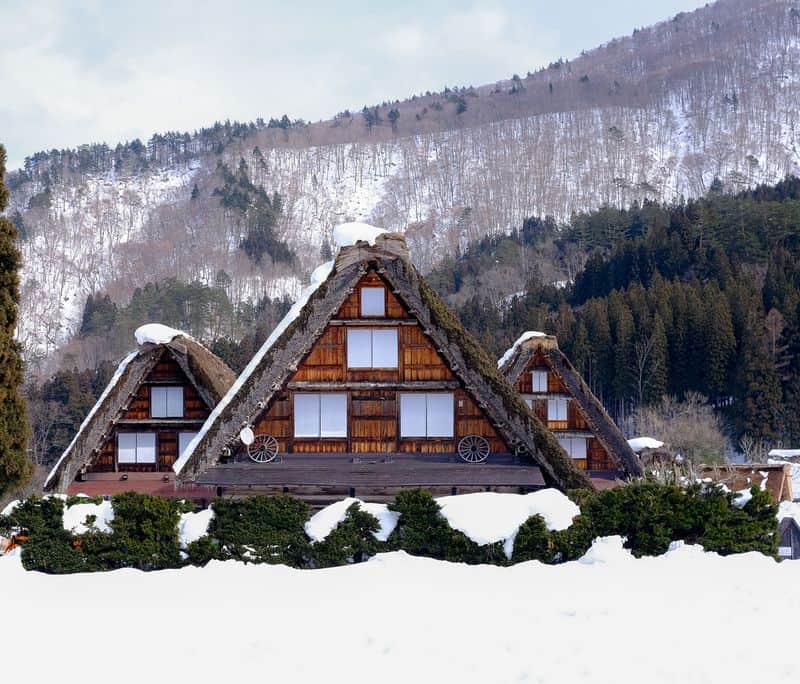
Nestled in the mountainous region of Shirakawa-go, Japan, the Gassho-Zukuri farmhouses are iconic examples of traditional Japanese wooden architecture. These farmhouses, with their steeply pitched thatched roofs, resemble hands in prayer.
Constructed to withstand heavy snowfall, the design reflects an ingenious adaptation to the local climate. Visitors can explore the interiors, gaining insight into rural Japanese life and cultural heritage.
The harmonious blend of architecture and nature creates a picturesque landscape, attracting tourists seeking beauty and tradition.
7. Petäjävesi Old Church, Finland
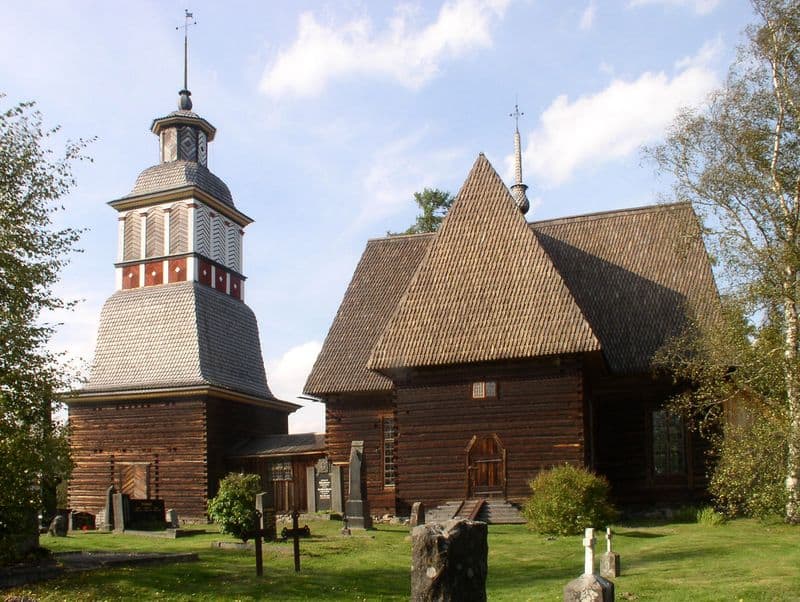
Petäjävesi Old Church in Finland is a splendid example of Nordic wooden church architecture from the 18th century. The church is a UNESCO World Heritage Site, renowned for its rustic beauty and historical significance.
The log construction and handcrafted details reveal the skill of Finnish builders, offering a window into the past. Visitors can explore the churchyard, appreciating its well-preserved state and serene atmosphere.
The church embodies the simplicity and elegance of wooden design, making it a cherished landmark.
8. Hamnøy Bridge, Norway
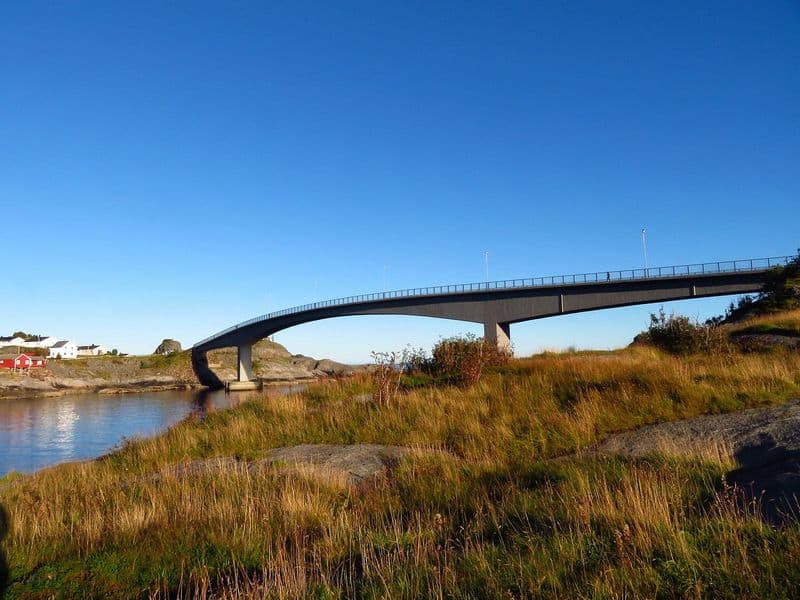
Hamnøy Bridge in Norway is a striking example of contemporary wooden bridge engineering. Spanning the scenic fjords of Hamnøy, it combines modern design with traditional materials.
The bridge’s sleek wooden structure enhances the natural beauty of its surroundings, offering stunning views for travelers. Its construction showcases the adaptability and sustainability of wood in modern architecture.
Walking across the bridge, visitors can enjoy the breathtaking landscape, making it a perfect spot for photography and reflection.
9. Dome of Visions, Denmark
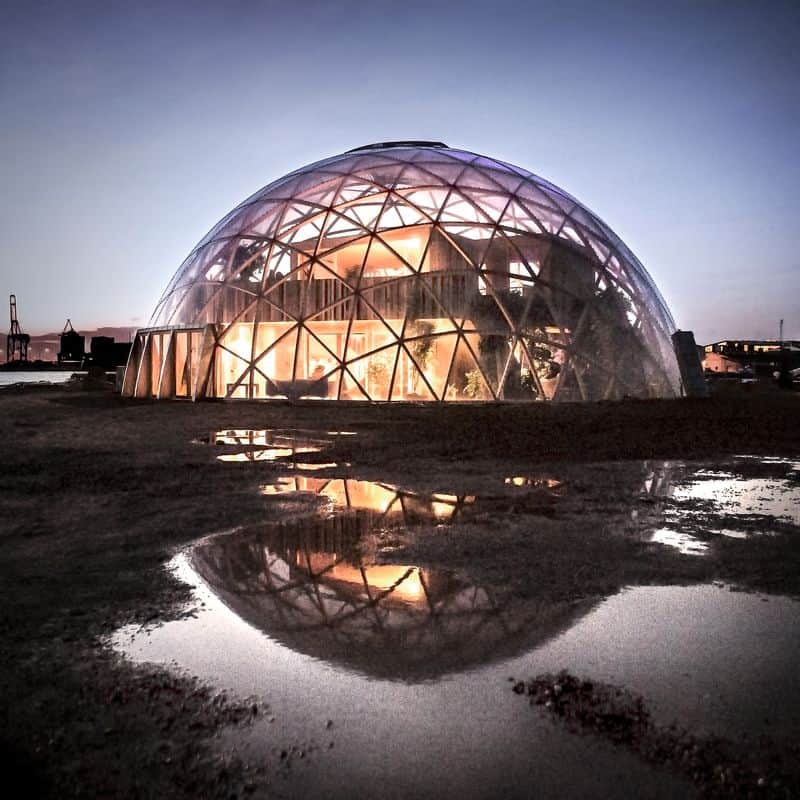
The Dome of Visions in Copenhagen, Denmark, is an innovative structure blending wood with sustainable design. This transparent dome serves as a cultural venue and a hub for green ideas.
Its wooden framework and glass panels create a unique space where nature and architecture converge. Visitors can engage in cultural events, workshops, or simply enjoy the tranquil ambiance.
The Dome of Visions exemplifies forward-thinking architecture, inspiring discussions on sustainability and urban living.

